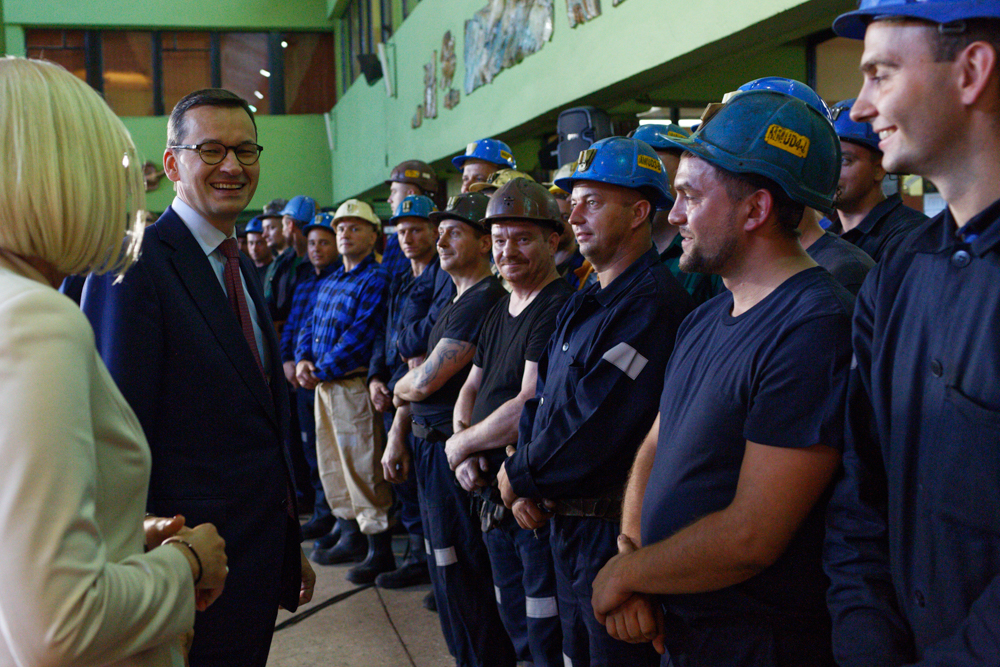Poland’s coronavirus infection rate would already be falling were it not for a series of mass infections in mines, says Poland’s health minister, Łukasz Szumowski.
Last week, production at three coal mines in the Upper Silesia region (Sośnica-Makoszowy, Jankowice and Murcki-Staszic) was suspended after 360 miners were infected and almost 1,500 were put into quarantine.
According to data published on Sunday morning, Silesia had the highest number of confirmed coronavirus cases (3,458) among Poland’s 16 provinces. That means a region with around 11% of Poland’s population has recorded almost 22% of confirmed cases.
Conditions in mines are particularly conducive to the spread of the virus, noted Szumowski. “The bad news is that we currently have a lot of positive [coronavirus test] results for miners in Silesia,” said the minister, quoted by RMF24. But he added that 97% of miners are not showing any signs of infection.
In response to the outbreak, the state-owned Polish Mining Group (PGG) – which is the biggest producer of hard coal in the European Union – has launched a mass testing drive among its employees. On Saturday around 2,500 samples were collected, mostly on a drive-through basis, while on Sunday a further 5,000 were taken, according to Onet.
Poland accounts for 86% of hard coal produced in the EU pic.twitter.com/1kMWqRS0QQ
— Notes from Poland 🇵🇱 (@notesfrompoland) August 25, 2019
“Miners drive their cars up to a tent, and do not leave the vehicles. They just leave the window open and specialised medical staff take a throat swab. The samples go to the laboratory for testing,” said Jarosław Wieczorek, governor of Silesia Province, quoted by Mining Magazine.
The situation has raised questions about why a number of mines remain open, especially as many other businesses in Poland have been shut down in one of Europe’s speediest and toughest lockdowns. The health minister has responded by saying that “mines cannot be entirely halted.”
Poland relies on coal to produce about 80% of its power – by far the highest proportion in the EU. Although the government has pledged to reduce this figure, it still envisions coal making up the majority of the energy mix for the foreseeable future.
In February, the government supported controversial plans for a what would be the deepest open pit coal mine in Poland. Last year, Poland was the only member state not to sign up to the EU’s goal of reaching climate neutrality by 2050.
EU countries by the sources of their power generation.
Poland is by far the most reliant on coal, which produces around 80% of its power.
Via the @guardian: https://t.co/iwV2tYwBpQ pic.twitter.com/3JY3xSGxNs
— Notes from Poland 🇵🇱 (@notesfrompoland) May 28, 2019
As Poland loosens its lockdown, there has been speculation that the process may be implemented more slowly in Silesia than in the rest of the country, reported Onet. To this, however, Szumowski said that “the decision will be made once all the results come in”.
Last week, the health minister noted that, unlike in almost all other EU countries, Poland’s rate of infections is not falling. This was because, he explained, the country has followed a different model to others.
By locking down early and strictly, it has contained the spread of the virus but pushed the peak of infections forward in time.
Main image credits: Adam Guz/KPRM (under public domain)

Maria Wilczek is deputy editor of Notes from Poland. She is a regular writer for The Times, The Economist and Al Jazeera English, and has also featured in Foreign Policy, Politico Europe, The Spectator and Gazeta Wyborcza.




















